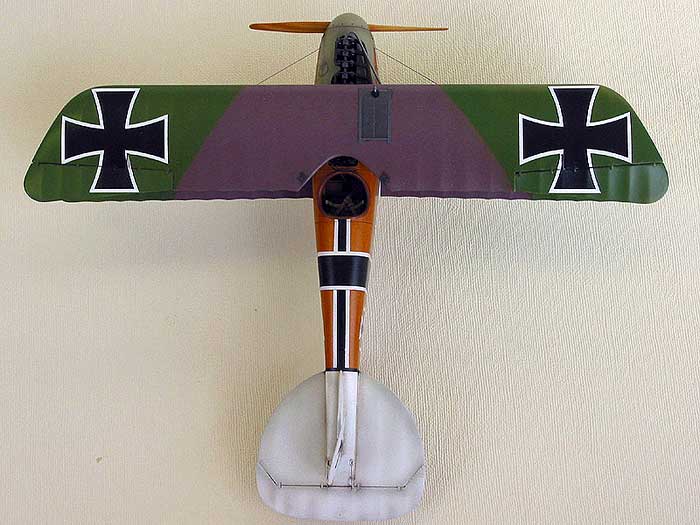http://www.theaerodrome.com/forum/archive/index.php/t-10379.html
If i understood it correctly, the boundary between the two colors starts on the 7th rib counting from the wingtip at the trailing edge... but how much sloped is this boundary? where does it end along the leading edge?
Here is a picture of a completed model, I want to know if the pattern is correctly applied at least for the top wing

I understand that the lower wing is the reverse of the top wing, whatever is the scheme used, but I want to ask, do the "slopingt" of the bottom wing follow the upper wing or it's the opposite
To clarify my question if / and are the boundaries between colors, or to be precise, the way they slope or slant then
if
Top wing green / mauve green (as in the picture)
then
Bottom wing green / mauve [fuselage] mauve green
or
Bottom wing green mauve [fuselage] mauve / green (reverse sloping)
Was reverse sloping ever used? As "reverse sloping" I mean that instead of making an arrow head flowing in the direction of flight, they form an V opposed to the direction of flight. I don't think so, but I want to be sure.
Also, were there variations where only 2 zones of color were used or the slopes were all in the same direction, slanted towards one side? Like in this picture , I want to know if it's a correct scheme














